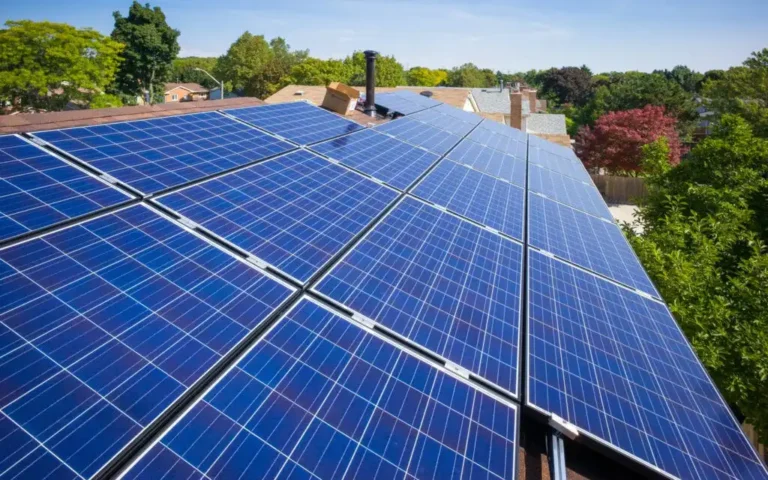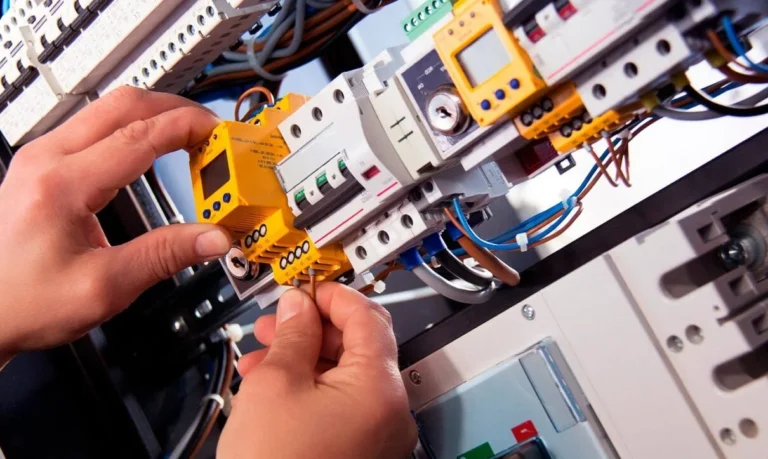Differentiating Property Maintenance
When it comes to owning and operating a business of any kind, certain measures and criteria must be met in order to ensure that operations run as smoothly and efficiently as possible. Focusing on the goods or service being provided, along with establishing solid relationships with the clients are undeniably critical components to any business. However, these processes can be abruptly thrown off track if contingencies arise. While there is a no cure-all for these kinds of obstacles and issues, implementing well thought out preventative measures can mean the world of difference when it comes to your business staying ahead of the competition. Employing a proper maintenance framework is the best way to ensure that contingencies like these are minimized as much as possible in terms of the efficacy of machinery, tools, technology, vehicles, and more.
Avoiding these possible contingencies entails establishing a “maintenance culture.” This involves consistently implementing maintenance-based practices into your daily log of work, as well as performing weekly, monthly, and quarterly thorough inspections on assets like machinery and tools. Doing so is the best way to not only maximize their efficiency but to ensure that possible contingencies are at their absolute minimum.
The type of maintenance for these integral aspects of a business varies, and can be broken down into four main subsections. These include:
- Preventative Maintenance
- Corrective Maintenance
- Intelligent Maintenance
- Proactive Maintenance
While others may exist, these 4 rudimentary types of maintenance capture everything a business should be doing to avoid obstacles that could run them off track. While the names may sound self-explanatory, there can be a lot more than meets the eye with these four types of maintenance frameworks. Below we will explain what each type is and how it can be implemented into a modern business.
Preventative Maintenance
As the name suggests, preventative maintenance is all about preventing damage, or about keeping obstacles at bay so that they cannot interfere with efficient work. Just as you would change the oil in your car to prevent it from breaking down, preventative maintenance refers to maintaining tools, machinery, etc from causing issues, by addressing possible outcomes before they even have the chance to arise. Preventative maintenance can also refer to replacing things like fire extinguishers and lightbulbs towards the end of their uses, as to ensure that they do not fail on the job. Preventative maintenance can also include anything from lubrication and cleanings to adjustments and repairs, which can maintain the vitality and health of essential resources. This not only ensures that these assets do not give out during an important order fulfilment or operation of any kind, but that they last as long as possible too. Employing regular preventative maintenance can save you and your firm thousands of dollars in the long run, as replacements and broken parts can cause unnecessary financial strain on a business.
While preventative maintenance certainly has its place in a well established “maintenance culture,” it does also have its drawbacks. It can be lengthy, and, depending on the timely use of a certain tool, employing this kind of maintenance could put that piece out of order for some time while it’s receiving the proper maintenance. An example of this can be with a device most of us use everyday, your smartphone.
Today’s smartphones are in use every single day. However when new software updates are necessary, that could take several hours to install, this could pose a risk to your day’s productivity. A work-around this set back, however, would entail installing the software update overnight, when your phone is not in use. This same principal can also be applied to most preventative maintenance scenarios. If there is a problem with a certain piece of machinery, it can be worked on overnight or while it is not in use. Still, some businesses do not have this luxury, and there still exists the possibility that maintenance can span several days or longer.
Additionally, if not carried out correctly, preventative maintenance can also pose more risks than benefits. These come in two forms: under-maintenance and over-maintenance, and are highlighted below.
Under-Maintenance
Under-maintenance refers to a scenario in which an asset was not properly maintained before-hand, and has thus ceased to perform at its maximum capability. Sounds pretty self-explanatory right? Well, the source of under-maintenance can oftentimes be hard to identify, which leads to further complications in terms of how to plan for future preventative maintenance. Under-maintenance could be the result of bad timing, rushed execution, using inappropriate tools or fluid, to name just a few. Under-maintenance can also lead to higher future costs to counteract the results of a poorly done job.
Over-Maintenance
Who would’ve thought that over-maintenance could be a negative? Sure enough, over-maintenance can pose its own slew of issues as well. Over-maintenance refers to performing maintenance services more frequently than is recommended for a particular tool or machine. Although more unlikely than under-maintenance, over-maintenance provides no return on investment and can pose risks to workers. Valuable time is also lost, which increases the opportunity costs of maintaining certain items.
Predictive Maintenance
Predictive maintenance, also known as condition-based maintenance, is one of the most cost-effective and efficient types of maintenance, but it cannot be applied to everything. Predictive maintenance is essentially performing a maintenance service whenever it is needed, rather than on a timely, consistent basis like with preventative maintenance. When a predictive maintenance protocol is imposed, there is a certain set of conditions for which each machine must meet. If a certain machine or tool is not performing to these certain qualifications and meeting the correct criteria, then predictive maintenance can be performed.
Predictive maintenance may, however, require more extensive training and knowledge of how a machine operates. This is because to spot and address any deviation from the standard criteria that the machine must be operating on takes a deep understanding of the mechanics behind it, and the knowledge of what to do if something goes wrong. Predictive maintenance is, in essence, about predicting a dire problem, before it can get worse. Take a car for example. If the set criteria for which the car must operate entails a smooth ride, any deviation from this may be cause for concern. So, if one day the car begins to perform wobbly or shaky because of a small leak in the tire, predictive maintenance would entail examining the tires, and patching the small leak before it can become a larger problem, such as a completely blown tire, a bent rim, or even worse.
Moreover, predictive maintenance is the fastest way for trained technicians and engineers to examine a small issue and to address it before it becomes much larger, and potentially very threatening. A predictive maintenance schedule can also be implemented into an existing preventative maintenance schedule. If a machine is already undergoing service, a brief inspection can be done to identify possible problems while the machine is already out of use. This is one of the best ways to implement this protocol, as it does not cause any further disruption, and can lead to a more reliable system of maintenance overall.
Intelligent Maintenance
Unlike preventative maintenance and predictive maintenance, intelligent maintenance has little to nothing to do with examining the physical appearance and functionality of a machine. Intelligent maintenance entails obtaining and studying digital information from a machine, which can then be discerned to make a conclusion. Today more than ever, machines have the ability to communicate so much information about themselves and their health, information that humans would have a hard time finding out for themselves with just what meets the eye. Being able to use this information and make decisions based on it is arguably the most innovative and cost-effective way to perform maintenance on any machine, especially newer, high-tech apparatuses.
Data from machines can be collected via a myriad of methods, such as advanced sensors, information collection processes, databases, and more. And, because all these types of methods are very recent, intelligent maintenance also varies from preventative maintenance and predictive maintenance in a timely sense. With the rise of technology in recent years, intelligent maintenance has grown exponentially. With more high-tech machines and systems being implemented into businesses today, intelligent maintenance systems must also be incorporated to keep up.
Intelligent maintenance has made such large strides in recent years, that some corporations are being based off of entire intelligent platforms. Many have made strides in shifting from traditional processing and maintenance systems to tether-free structures, calling for an even higher demand of the newly emerged intelligent maintenance.
Proactive Maintenance
Sometimes, maintenance can be underdone even when there are no visible or noticeable signs of impairment. However, just because there are no symptoms of malfunction, does not mean that problems can’t be brewing. Proactive maintenance seeks to address just that – taking care of the source before visible problems even have the chance to form. One of the most obvious benefits to proactive maintenance is the reduction of wasted time and money that could have been spent during repairs or keeping up with faulty parts. The ultimate goal of proactive maintenance is to perform any needed maintenance before breakdowns and problems arise, which can significantly reduce costs in the long run, saving businesses money. Proactive maintenance can also reduce costs in the safety department as well, addressing possible issues at the source can significantly reduce the risk of injury due to future machine malfunctions.
There are two types of proactive maintenance: condition-based maintenance and routine maintenance, both of which have their place in a modern maintenance culture.
- Condition-Based Proactive Maintenance: This is typically done using technological sensors to predict malfunctions before they can occur. Similar to intelligent maintenance, condition-based proactive maintenance uses the power of technology to help make more educated decisions.
- Routine Proactive Maintenance: Just like preventative maintenance, routine proactive maintenance is performed on a schedule. For example, a machine can be inspected once every week, at the same time. Doing so is another way to predict possible malfunctions, and could be considered taking the safest route.
While both forms of proactive maintenance have their pros, there are some cons that could exist as well, most notably being the time investment that comes with frequent machine inspection. This could also be a financial drawback, as a technician may be required to perform thorough routine checks. And, although proper planning should be considered a cornerstone for establishing an effective maintenance culture, proactive maintenance requires even more planning than usual, which could further hinder productivity.
Conclusion
While one maintenance structure may work well for one business, it doesn’t necessarily mean that it will suit another just as well. Each maintenance structure has its place, when applied effectively, can save time and financial stress. Maintenance structures are some of the most important, yet under-appreciated, frameworks in any business and cannot be gone without. Without them, a reliable production schedule can not be established.








